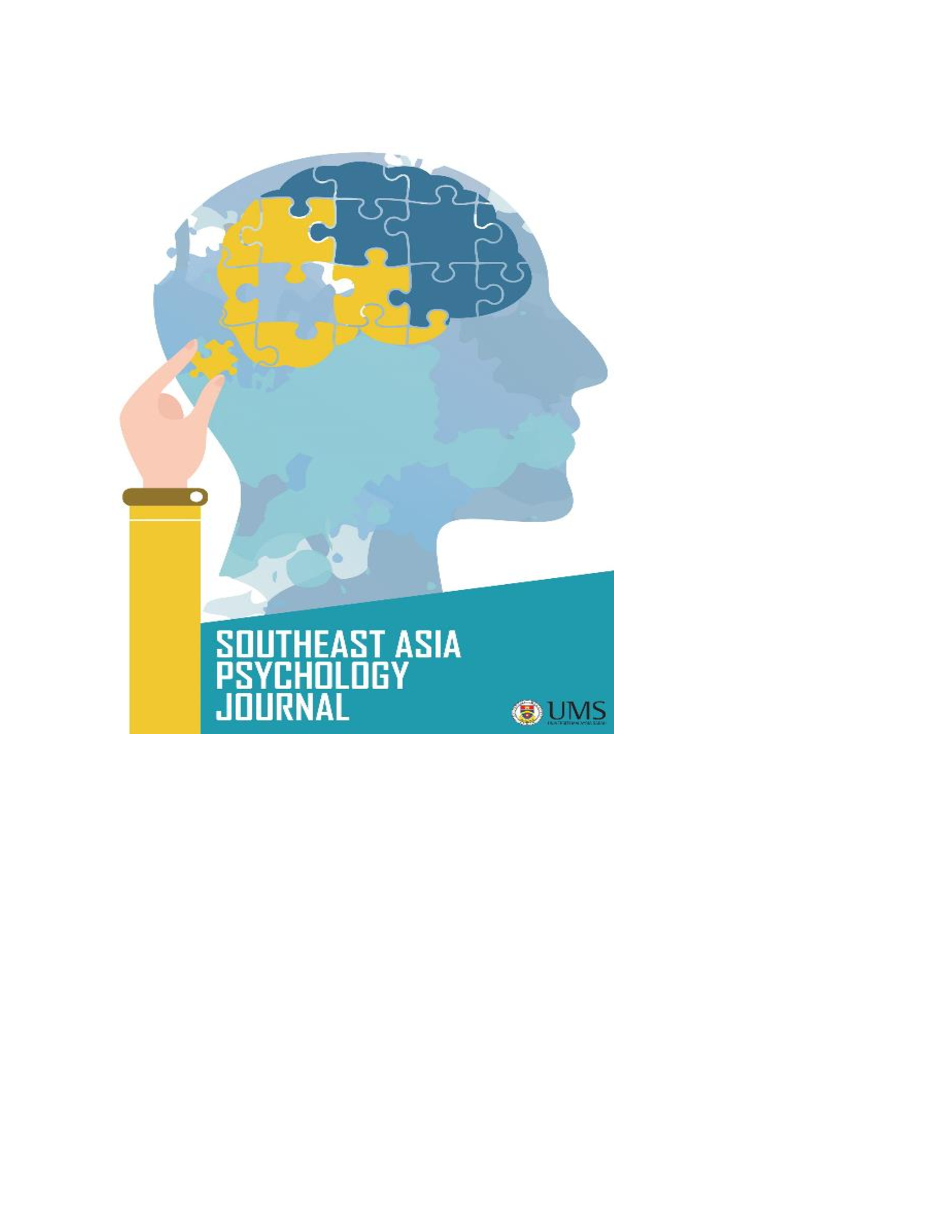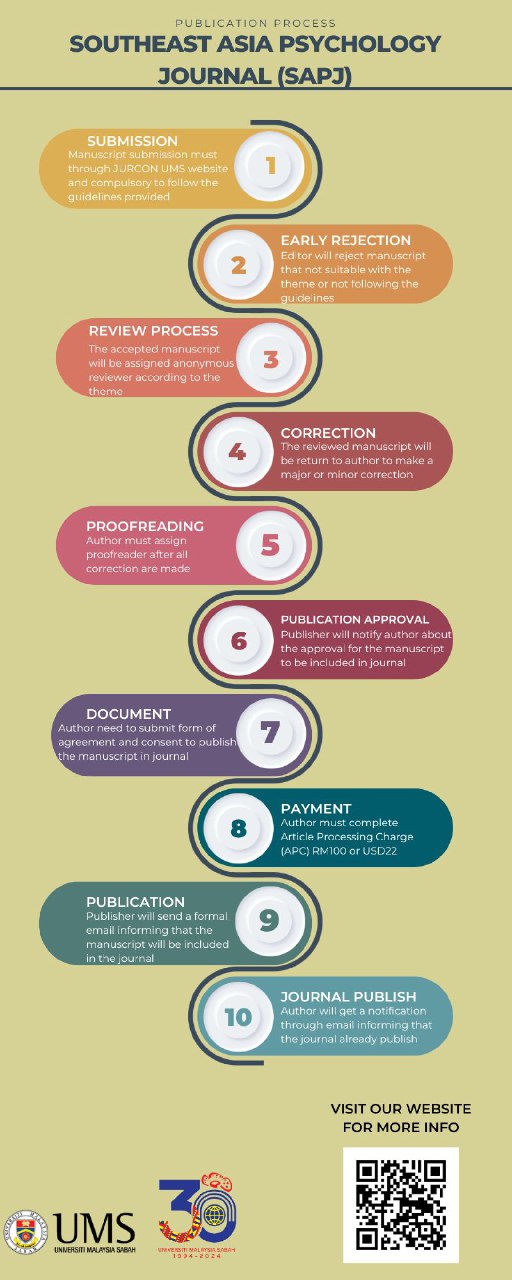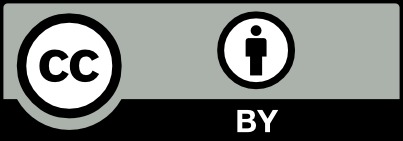MIMIC MODEL OF PROBLEMATIC INTERNET USE SHORT FORM (PIUQ-SF 6) IN INDONESIA
DOI:
https://doi.org/10.51200/sapj.v10i1.4924Keywords:
PIUQ-SF, MIMIC Model, ValidityAbstract
The Problematic Internet Use Questionnaire (PIUQ) consists of three dimensions (Demotrovics, 2016): Obsession (i.e., obsessive thoughts about the internet, and mental withdrawal symptoms when there is a lack of internet use), neglect (i.e., ignoring basic needs and daily activities), and impaired self-control (i.e., difficulty in controlling the internet). This study aims to analyse the PIUQ measuring instrument further using the Rating Scale analysis technique. The number of respondents in this study was 550, who was chosen voluntarily by spreading it on social media. The findings show that this unidimensional PIUQ has excellent validity quality and good item reliability and can be profitable if used on a large scale because of the small number of items. The MIMIC model is ideal; the absence of susceptibility to differences in characteristics indicates that the scale used in the measurement remains consistent in a heterogeneous population.
References
APJII., A. P. (2020). Laporan Survei Internet APJI.
Aboujaoude, E. (2017). The Internet’s effect on personality traits: An important casualty of the “Internet addiction” paradigm. https://doi.org/10.1556/2006.6.2017.009
Agusti, Riska DCW ; Leonardi, Tino. 2015. Hubungan Antara Kesepian dengan Problematic Internet Use pada Mahasiswa. Jurnal Psikologi Klinis dan Kesehatan Mental. Vol . 04. No.1 April 2015.
Andangsari, a. a. (2018). Indonesia Problematic Internet Use Scale. Journal of Physics : Conf Series 1175 (2019) 012239. IOP Publlishing.
Ambarwaty, Usni ; Suryadi, Bambang ; Hayat, Bahrul ; Sumiati , Neneng Tati. 2020. Psychological Factor That Influence Smartphone Addiction Of Islamic School Students. Indonesian of Journal Educational Review. Vol.7 No.1.
Asmarany, A. I., & Syahlaa, N. S. (2019). Hubungan Loneliness dan Problematic Internet Use Remaja Pengguna Sosial Media. Sebatik 1410-3737, 387.
Beard, K. W. D., & Wolf, E. M. (2001). Modification in the Proposed Diagnostic Criteria for Internet Addiction. CYBERPSYCHOLOGY & BEHAVIOR, 4(3).
Chou, W., Huang, M., Chang, Y., Chen, Y., & Yen, C. (2017). Social skills deficits and their association with Internet addiction and activities in adolescents with attention-deficit/hyperactivity disorder. https://doi.org/10.1556/2006.6.2017.005
Demotrovics, a. a. (2016). Psychometric Properties of the Problematic Internet use Questionnaire Short Form (PIUQ-SF-6) in a Nationally Representative Sample of Adolescents. PLoS ONE 11(8): e0159409.
Nur, Hifizah ; Misrawati, Dian, dan Utami, Shinta. (2019). What is the influence of smartphone addiction on student’s psychological well-being. Southeast Asia Psychology Journal. Jilid 9. Halaman 122-137
Koronczai, B., bert Urbá, R., ngyi Kö kö nyei, G., la Paksi, B., Papp, K., Kun, B., Arnold, P., nos Ká llai, J., & Demetrovics, Z. (2011). Confirmation of the Three-Factor Model of Problematic Internet Use on Off-Line Adolescent and Adult Samples. https://doi.org/10.1089/cyber.2010.0345
Lu, Xi , Yeo, Kee JIar, Gui, Fang dan Zhao, Zhenging. 2020. Factor Structure and a multiple indicators multiple cause model of internet addiction test: the effect of sosio-demographic and internet use variables. Current Psychology (Vo.39. Issue 3. http://dx.doi.org/10.1007/s12144-019-00234-9
Machimbarrena, J. a. (2019). Profiles of Problematic Internet Use and its impact on adolescents health related quality of life. Internet Journal of Environmental Researc.
Muthen,B (1989). Latent variable modeling in hetergoneous populations. Psychometrika, 54 (4), 557-585.
Natanael, Y. (2021). Analisis Rasch Model Indonesia Problematic Internet Use (IPIUS) . . Jurnal Persona :Jurnal Psikologi Indonesia. , https://doi.org/10.30996/persona.v10i1.4827.
Putri, A. A. (2019). Hubungan Problematic Internet Use pada Social Anxiety dan Loneliness . Prosiding Seminar Nasional Kesehatan "Transformasi Bidang Kesehatan di Era Industri 4.0", 8-18.
Rahayu, A. D., & Prasetyoadji, A. (2020). Problematica Internet Use (PIU) Identification Using The Biopsychosocial Model Approach In Emerging Adulthood. International Journal of Business, Humanities, Education and Social Sciences, 19-23.
Restrepo, a. a. (2020). Problematic Internet Use in Children and Adolescents. Association with Psyhiatric disorders and Impairment. BMC Psychiatry., https://doi/org/10.1186/s12888-020-02640-x.
Siddik, Satria; Mafaza; Sembiring, Lala S. 2020. Peran Harga Diri terhadap Fear of Missing Out pada Remaja Pengguna Situs Jejaring Sosial. Vol. 10. No.2 127-138. Jurnal Psikologi Teori dan Terapan
Standars for Educational and Psychological Testing : American Educational Research Association. (2014). America: American Psychological Association dan National Council on Measurement in Education .
Stavropoulos, V., Gomez, R., Steen, E., Beard, C., Liew, L., & Griffiths, M. D. (2017). The longitudinal association between anxiety and Internet addiction in adolescence: The moderating effect of classroom extraversion. https://doi.org/10.1556/2006.6.2017.026
Thahir, A., Bulantika, S. Z., Syukron, B., & Sari, P. (2020 ). Effect of Problematic Internet Use (PIU) and Psychological Well-Being in Adolescents with Social Anxiety. International Journal of Psychososial Rehabilitation , 5147.
Wardhani & Amalia (2020). Psikologi Positif Sebuah Cara dalam Memandang Ilmu Psikologi. https://www.researchgate.net/publication/344252867
Widhiarso, W (2012). Penerapan Model MIMIC untuk menguji Konsistensi Hasil Pengukuran melalui Skala, Journal of Education and Learning. Vol.6(2) pp.109-118








